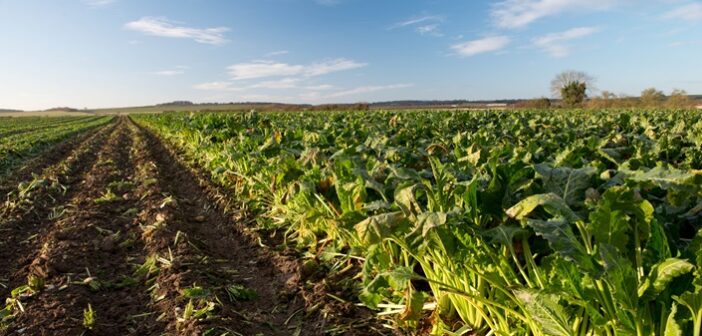Sugar beet crops that have been slow to get going this season would benefit from a Vixeran® biofertiliser application, advises Syngenta sugar beet specialist, Jonathan Ronksley.
“Delayed drilling in wet soils and poor early growing conditions have left many crops behind where growers would like them this season. The wet winter has also depleted soil fertility, particularly on the prime silty-sand land,” suggests Jonathan.
Early nitrogen is essential for rapid leaf growth during sugar beet canopy formation, he points out. “During rapid leaf expansion, N-uptake in sugar beet averages 4 to 5 kg N per hectare every day. The compensatory growth of backward crops will put even greater strain on resources this season.”
The biofertilser Vixeran delivers nitrogen to the crop in small but constant amounts through the season. Jon highlighted this helps to maintain growth and development, while avoiding detrimental effects of excessive nitrogen inputs, which can decrease the sugar content of the root.
Vixeran is based on the highly efficient nitrogen-fixing bacterium, Azotobacter salinestris. Applied as a foliar treatment, it multiplies rapidly across the leaves and the roots, supporting the crops nutritional requirements throughout the entire season.
Sugar beet trials in a commercial Yorkshire crop last year gave over 15% yield uplift, to 135 t/ha, from a single Vixeran application, compared to the farm standard of 116 t/ha. Furthermore, the sugar content was 17.19% in the Vixeran treated, compared to 16.71% in the intreated, further boosting the adjusted tonnage yield.
“The whole area received the farm standard treatment of 150kg N/ha, demonstrating the benefit of the Vixeran supplying additional nutrient that’s taken up and utilised by the crop,” adds Jonathan.
Research into the plants’ physiology highlighted how new leaves produced following application benefitted most from an elevated leaf nitrogen content, compared to older established leaves.
Jonathan advocates a Vixeran application at a suitable opportunity from early crop establishment right through full ground closure, recommended at growth stage BBCH 14-18.
“Crops should be actively growing, which indicates the conditions when Vixeran bacteria can rapidly colonise the plant and the soil biosphere, to start fixing atmospheric nitrogen.”
In good growing conditions the Vixeran colonies will multiply over 100 times in less than a week, reaching more than a billion per hectare in six days. This fast multiplication provides more readily available N, just when the crop requires it most.




